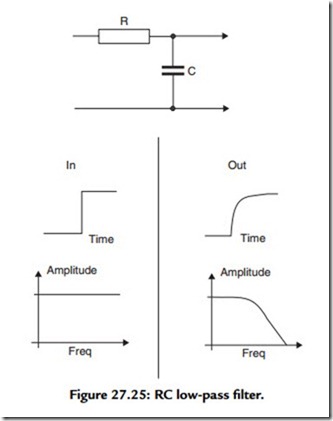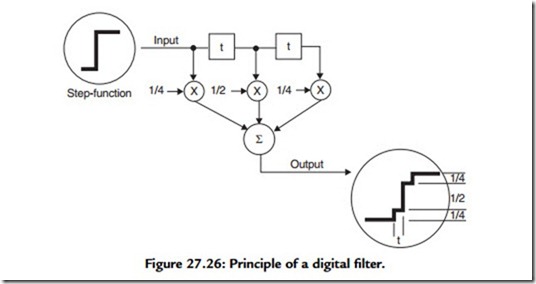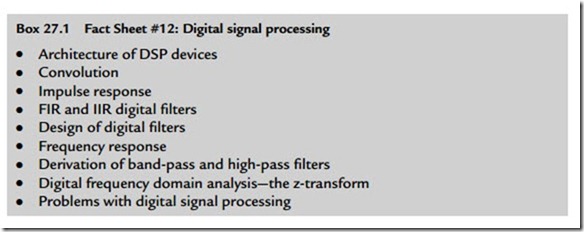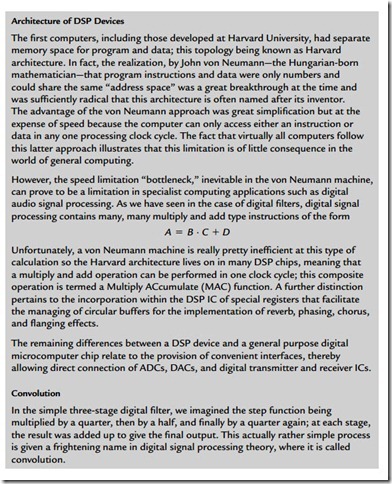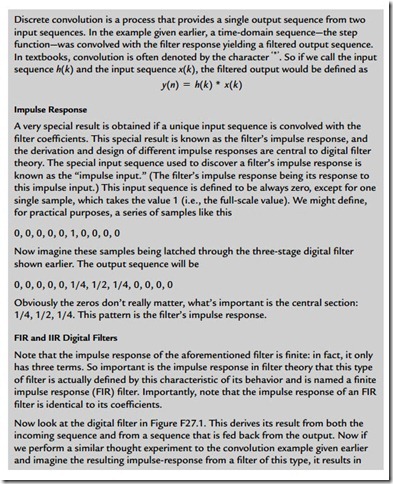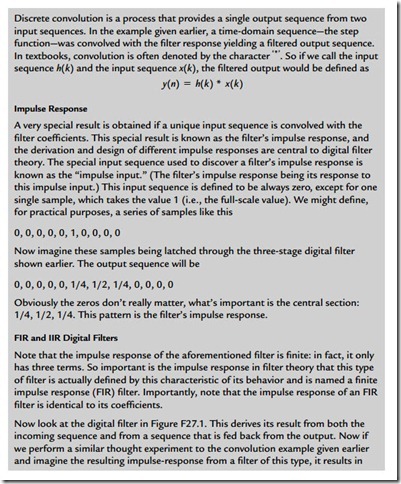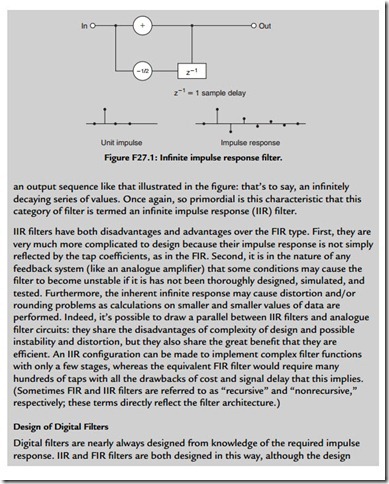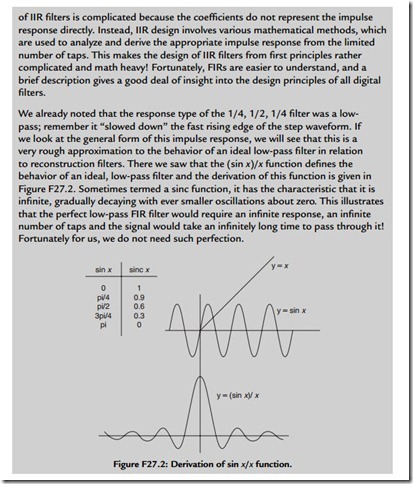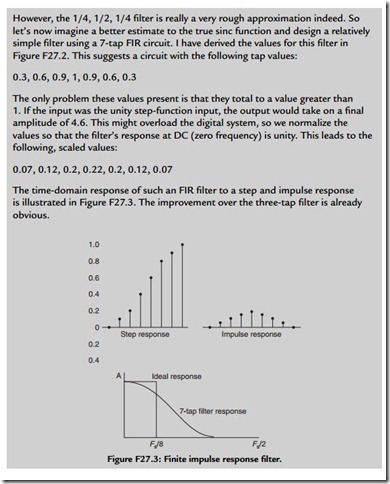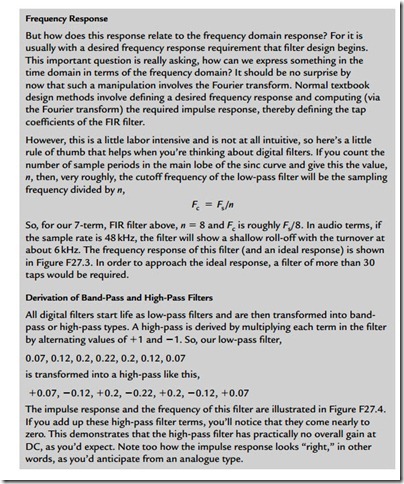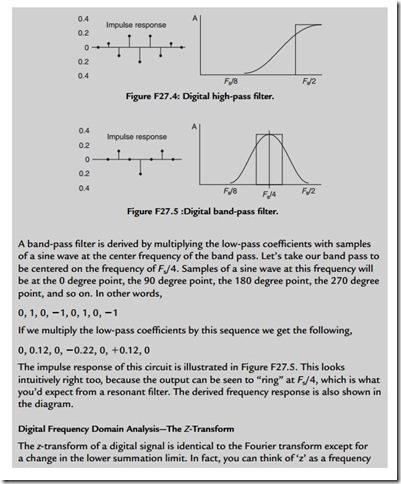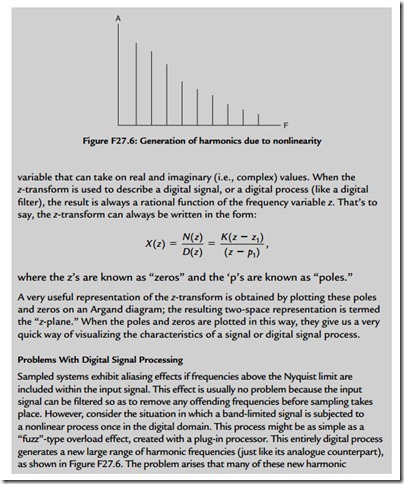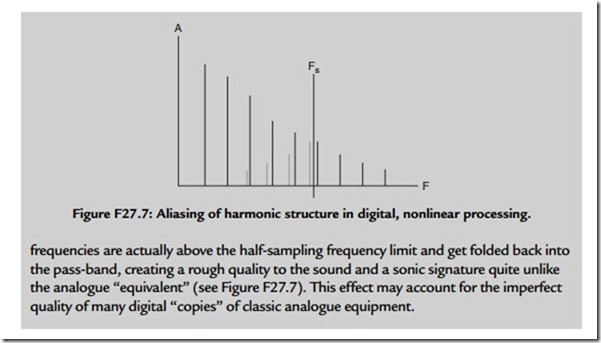Digital Consoles
Introduction to Digital Signal Processing (DSP)
DSP involves the manipulation of real-world signals (for instance, audio signals, video signals, medical or geophysical data signals) within a digital computer. Why might we want to do this? Because these signals, once converted into digital form (by means of an analogue to digital converter), may be manipulated using mathematical techniques to enhance, change, or display data in a particular way. For instance, the computer might use height or depth data from a geophysical survey to produce a colored contour map or the computer might use a series of two-dimensional medical images to build up a three-dimensional virtual visualization of diseased tissue or bone. Another application, this time an audio one, might be used to remove noise from a music signal by carefully measuring the spectrum of the interfering noise signal during a moment of silence (for instance, during the run-in groove of a record) and then subtracting this spectrum from the entire signal, thereby removing only the noise—and not the music—from a noisy record.
DSP systems have been in existence for many years, but, in these older systems, the computer might take many times longer than the duration of the signal acquisition time to process the information. For instance, in the case of the noise reduction example, it might take many hours to process a short musical track. This leads to an important distinction that must be made in the design, specification, and understanding of DSP systems; that of nonreal time (where the processing time exceeds the acquisition or presentation time) and real-time systems, which complete all the required mathematical operations so fast that the observer is unaware of any delay in the process. When we talk about DSP in digital audio it is always important to distinguish between real-time and nonreal-time DSP. Audio outboard equipment that utilizes DSP techniques is, invariably, real time and has dedicated DSP chips designed to complete data manipulation fast. Nonreal-time DSP is found in audio processing on a PC or Apple Mac where some complex audio tasks may take many times the length of the music sample to complete.
Digital Manipulation
So, what kind of digital manipulations might we expect? Let’s think of the functions that we might expect to perform within a digital sound mixer. First, there is addition. Clearly, at a fundamental level, that is what a mixer is—an “adder” of signals. Second,
we know that we want to be able to control the gain of each signal before it is mixed. So multiplication must be needed too. So far, the performance of the digital signal processing “block” is analogous with its analogue counterpart. The simplest form of digital audio mixer is illustrated in Figure 27.24. In this case, two digital audio signals are each multiplied by coefficients (k1 and k2) derived from the position of a pair of fader controls; one fader assigned to either signal. Signals issuing from these multiplication stages are subsequently added together in a summing stage. All audio mixers possess this essential architecture, although it may be supplemented many times over.
But, in fact, the two functions of addition and multiplication, plus the ability to delay signals easily within digital systems, allow us to perform all the functions required within a digital sound mixer, even the equalization functions. That’s because equalization is a form of signal filtering on successive audio samples, which is simply another form of mathematical manipulation, even though it is not usually regarded as such in analogue circuitry.
Digital Filtering
The simplest form of analogue low-pass filter is shown in Figure 27.25. Its effect on a fast rise-time signal wave front (an “edge”) is also illustrated. Note that the resulting signal has its “edges” slowed down in relation to the incoming signal. Its frequency response is also illustrated, with its turnover frequency. Unfortunately, in digital circuits there are no such things as capacitors or inductors, which may be used to change the frequency response of a circuit. However, if you remember, we’ve come across situations before in sections as diverse as microphones to flanging, phasing, and chorus wherein a frequency response was altered by the interaction of signals delayed with respect to one another. This principle is
the basis behind all digital filtering and may be extended to include several stages of delay as shown in Figure 27.26. By utilizing a combination of adder and variable multiplication factors (between the addition function and the signal taps) it is possible to achieve a very flexible method of signal filtering in which the shape of the filter curve may be varied over a very wide range of shapes and characteristics. While such a technique is possible in analogue circuitry, note that the “circuit” (shown in Figure 27.26) is actually not a real circuit at all, but a notional block diagram. It is in the realm of digital signal processing that such a filtering technique really comes into its own: the DSP programmer has only to translate these processes into microprocessor type code to be run on a microcontroller IC, which is specifically designed for audio applications—a so-called DSP IC. Herein lies the greatest benefit of digital signal processing—that by simply reprogramming the coefficients in the multiplier stages, a completely different filter may be obtained. Not only that, but if this is done in real time too, the filter can be made adaptive, adjusting to demands of the particular moment in a manner that might be useful for signal compression or noise reduction.

